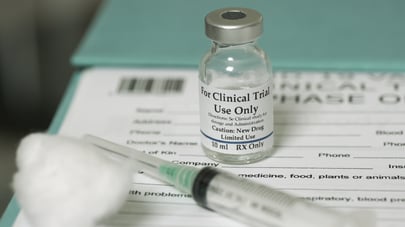Your Guide to Prostate Cancer and Treatment
6 min read

Besides skin cancer, prostate cancer is the most common cancer in men, according to the National Cancer Institute. The good news is prostate cancer is often curable with a near 99% five-year relative survival rate. Learn more about this common type of cancer.
What is Prostate Cancer?
The prostate gland is a part of the male reproductive system and is located directly underneath the bladder and in front of the rectum. It surrounds the urethra and is about the size of a walnut. The prostate gland produces the seminal fluid that helps sperm travel and survive.
Prostate cancer starts in the prostate when cancerous cells grow out of control. Though there are different types of cancer that start in the prostate, but the most common one is adenocarcinomas, a type of cancer that occurs in glands or glandular structures.
Risk Factors for Developing Prostate Cancer
According to the Centers for Disease Control and Prevention, 13% of men will develop prostate cancer. All men are at risk, but there are a few factors that can increase your risk, such as:
 African American men—Prostate cancer develops in men with African descent more so than in any other race. Experts aren’t certain why. African American men are also more likely to develop prostate cancer at an earlier age.
African American men—Prostate cancer develops in men with African descent more so than in any other race. Experts aren’t certain why. African American men are also more likely to develop prostate cancer at an earlier age.
Age—The risk of prostate cancer increases after age 50, and the majority of cases are diagnosed in men older than 65.
Family history—If you have a father or brother who was diagnosed with prostate cancer, your risk more than doubles. If you have been diagnosed with prostate cancer before, your risk for developing it again is also increased.
Signs and Symptoms of Prostate Cancer
Prostate cancer in its early stages may not have any signs or symptoms. In later stages, the top five signs of prostate cancer include:
- Blood in your urine or semen
- Difficulty getting an erection
- Difficulty urinating, including a slow stream, a weak or interrupted stream, or the urge to urinate more often or at night
- Pain in your hips, back, chest, or other parts of the body where cancer may have spread
- Weakness or numbness in your legs or feet
Other signs and symptoms can include painful ejaculation and difficulty emptying the bladder completely. These can often be related to other non-cancerous conditions so be sure to talk with your doctor about testing for cancer and other prostate conditions.
Read more about prostate cancer symptoms.
How Prostate Cancer is Diagnosed
According to the U.S. Preventive Services Task Force, men ages 50 to 69 with average risk should have the opportunity to have a prostate cancer screening. Your provider can discuss your best option.
The prostate cancer screening process typically includes both:
Digital rectal exam—During a digital rectal exam, your healthcare provider will insert a gloved and lubricated finger into the rectum to check for any bumps or hardness of the prostate.
Prostate-specific antigen (PSA) blood test—PSA is made by the prostate, and the likelihood of prostate cancer increases as PSA levels increase. Normal PSA levels are under 4 nanograms per milliliter (ng/mL), and the risk of having prostate cancer is over 50% with a PSA level of 10 ng/mL or more. However, there are some factors that can influence PSA blood test results, such as an enlarged prostate, ejaculation, riding a bicycle, medications, and herbal mixtures. Be sure to talk with your healthcare provider about factors that might influence your results.
When do you need a prostate biopsy?
A single elevated PSA test is not a sure sign of cancer. It can also be related to other, non-cancerous, conditions of the prostate. If the results seem high, a re-check may be done in a few months to see if the numbers are continuing to go up or if they've returned to a more normal level. If the PSA is still high, a prostate biopsy is the best way to see if there are changes in the cells that indicate cancer.
Treatment for Prostate Cancer
Active surveillance and watchful waiting may be a good treatment option if you have been diagnosed with early stage prostate cancer because it grows very slowly. If routine test results show cause for concern or increasing symptoms develop, then your provider would discuss treatment options.
If you and your provider decide treatment is right for you, Rocky Mountain Cancer Centers (RMCC) offers the latest treatment options for prostate cancer including:
- Chemotherapy is typically used in people whose cancer has spread and no longer responds to hormone therapy.
 Clinical trials. RMCC offers several clinical trials for patients with prostate cancer.
Clinical trials. RMCC offers several clinical trials for patients with prostate cancer.- Hormone therapy can be used alone or in conjunction with other treatment options. Because male hormones can sometimes cause prostate cancer to grow, hormone therapy can block these harmful hormones. RMCC offers different hormone therapy medications, such as luteinizing hormone-releasing hormone agonists, antiandrogens, and others. Surgery to remove the testicles, which produce male hormones, is also an option for hormone therapy.
- PSMA therapy is for men with advanced stages of prostate cancer. RMCC was one of the first in the state of Colorado to offer PSMA therapy for prostate cancer. PSMA therapy for prostate cancer is a type of therapy that provides radiation directly to prostate cancer cells.
- Radiation therapy, both internal and external, can be used to treat any stage of prostate cancer. Some men receive radiation therapy before or after prostate cancer surgery.
-
Surgery. Prostate cancer surgery is performed at different cancer stages and is used to remove part or the entire prostate.
Read about all the various treatment options for prostate cancer at RMCC.
Prostate Cancer Outcomes and Survival Rates
While treatment may not be needed right away, prostate cancer is not something you can ignore. Having a plan in place for the right timing of treatment can save your life.
When it’s treated successfully you can live a long time after prostate cancer. According to the American Cancer Society, the relative five-year survival rate of localized and regional prostate cancer is greater than 99%. Localized prostate cancer means the cancer occurs only in the prostate. Regional prostate cancer means that the cancer has spread to nearby parts of the body or lymph nodes.
Can You Reduce Your Risk of Developing Prostate Cancer?
The risk factors listed earlier such as your age, race and family history can't be changed. Although even if you have some of these risk factors it doesn't mean you'll definitely develop prostate cancer.
There are some other risk factors in your control such as:
- Avoid folic acid. Men who supplement their diets with man-made folic acid have an increased risk of developing prostate cancer. However, getting enough folate (a vitamin that naturally occurs in certain foods) may reduce the risk of prostate cancer.
- Avoid taking vitamin E supplements. According to the National Cancer Institute, research suggests men who took vitamin E had an increased risk of prostate cancer, even after they stopped taking it. While the risk is not clear, it may be best to avoid taking a sole vitamin E supplement. Talk with your healthcare provider about what is right for you.
- Eat a healthy diet. Fill your plate with plenty of fruits and vegetables, lean protein sources, whole grains, and non- or low-fat dairy. Avoid or limit added sugars, red or processed meats, alcohol, and saturated or trans fats.
- Get enough regular physical activity. The current guidelines are 150-minutes of moderate-intensity aerobic activity per week, 75-minutes of vigorous-intensity aerobic activity per week, or a combination of the two. Aerobic activity is anything that increases your heart rate, such as walking, cycling, or swimming.
- Maintain a healthy weight. Men who are overweight or obese have a higher risk of developing prostate cancer than men who maintain a healthy weight.
Be sure to talk with your healthcare provider about other ways to reduce your risk for prostate cancer and the right time to start screening for you.


